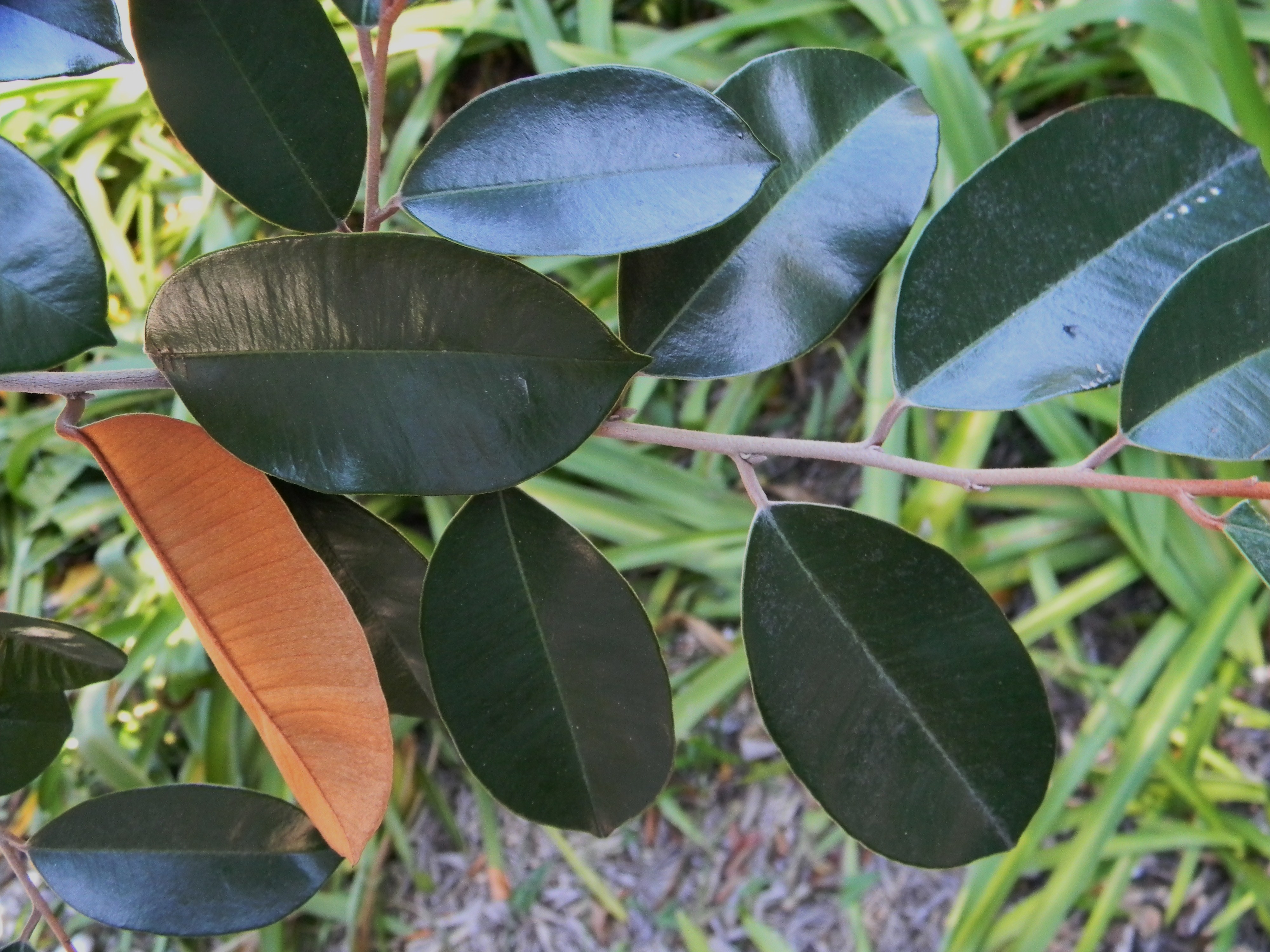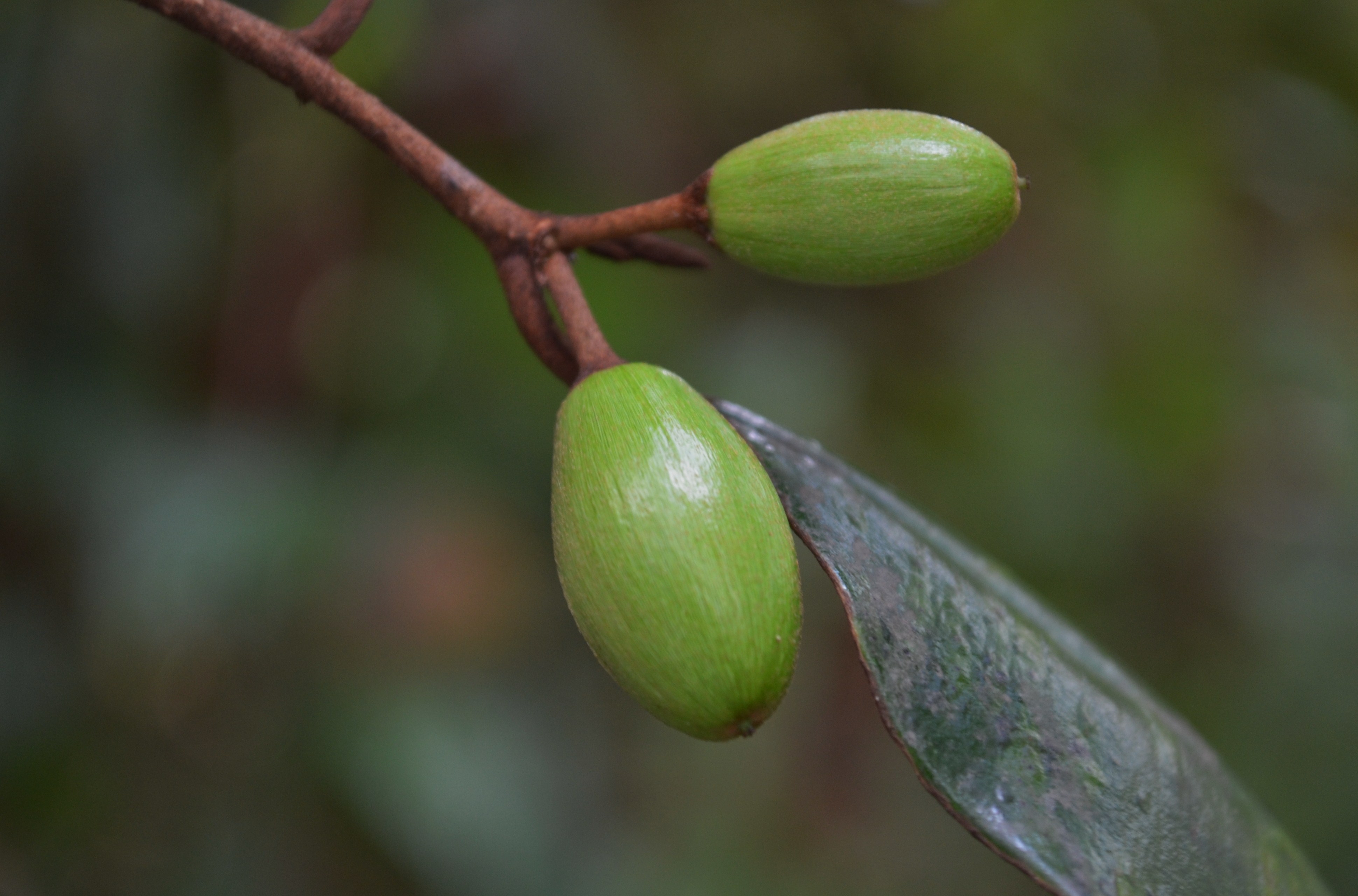Satin Leaf
Chrysophyllum oliviforme
Plant Family: Sapotaceae
Leaves: Alternate, simple, stiff, to 10 cm, oval to broadly elliptic, apices pointed or rounded, top surface shiny dark green, bottom surface distinctly coppery, smooth, and finely hairy, feeling soft like satin.
Bark: Gray-brown, fissured and flaky, the trunk is normally straight, not shrubby; the twigs are orange-brown.
Flowers: Small, pale yellow, bell-shaped, with five petals, in short clusters in the leaf axils; present any time of the year.
Fruits: A green berry that ripens to brown or black and is shaped like an olive (hence the specific name), to 2.5 cm, edible; seen throughout the year.
Habitat: The understory of hammocks and pinelands, mature specimens may reach canopy height; it is listed as threatened in the wild in Florida, but is widely planted for its attractive leaves.
Growth Form: Small to medium-sized tree.
Key Feature: The leaves of Satin Leaf are unmistakable.
Comments: Satin Leaf is related to Caimito (Chrysophyllum cainito), a West Indian tree that is cultivated for its larger and edible fruits.


